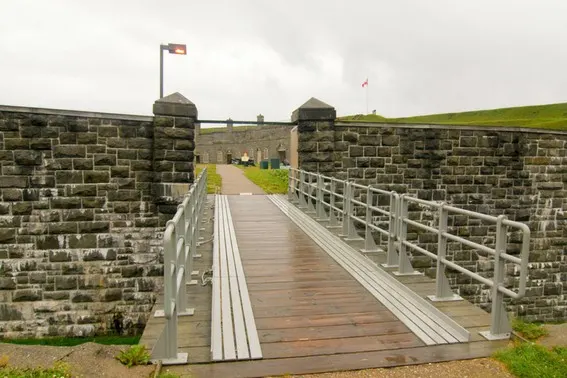
Many families travel to give their children a broader, more global perspective on life. Parents hope that a visit to Latin America will provide their children with a picture of families whose lives are much less privileged. Or, they plan a visit to Europe hoping to show their children that the Western world’s history is so much more than just the American Revolution and United States Civil War. Having traveled across the United States, I do realize that it’s even possible to provide a glimpse of this wider perspective here at home in the states; it is my hope that driving through the mountains of Appalachia, the plains of North Dakota, and the native ruins of the Southwest have given my suburban American children a taste of our diverse nation.
However, I discovered a whole new perspective on American history last summer in a place where I never expected to find it — Eastern Canada. Prior to spending a few weeks on a road trip driving from Ontario to Nova Scotia, I ordered a Parks Canada pass for my family. (In 2017, these passes are free – yes, free!) I figured that we would see the sites, from the Bay of Fundy to Prince Edward Island to Gros Morne National Park. Yet, my children became so excited about visiting these Parks Canada sites, completing booklets and earning a souvenir dog tag at each one, that we began stopping at all the national historic sites that we passed in addition to the more natural parks – from Fort Wellington in Ontario to Grand Pre in Nova Scotia. Our visits to these sites illustrated a shared history between our country and our northern neighbor with a different perspective.
Lead photo by: Bigstock/jefffrank
Learn Eastern Canada History while Traveling
A Different National Perspective at Levis Forts of Quebec
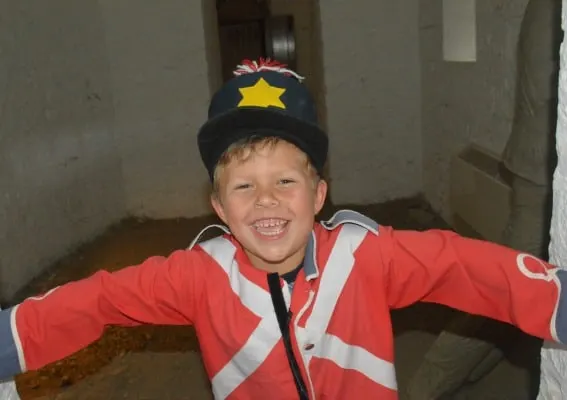
Living in the Old Line State of Maryland, I’ve visited a fair number of Civil War History sites and battlefields with my children. Even at a relatively young age, they have heard about President Lincoln’s Emancipation Proclamation and his Gettysburg Address. They’ve visited Fort Sumter in Charleston where the war began and Appomattox Court House where General Lee surrendered to General Grant. But, only rarely have we considered the implications that this war had internationally, and not once did it occur to us that the British might have been concerned that the fall out from the war would cause an invasion of Canada. This changed on our recent trip where we learned about eastern Canada history.
Upon visiting Levis Forts in Quebec, our perspective was broadened; the Levis Forts were built specifically to protect Canada in fear that the United States would attack Quebec City following the Civil War as an attempt to claim the British province of United Canada. So, after receiving their Parks Canada Xplorers Booklets at the Levis Forts, my kids dressed up as British engineers in bright red uniforms and set off on their mission to protect Canada from American invaders. It was an odd feeling for US military kids accustomed to the blue and white uniforms that their daddy wears.
Our 45 minute visit to the Levis Forts was a simple lesson in the fact that situations can often be more complex than they appear on the surface, and that in every situation there is likely to be a perspective that you’ve never even considered.
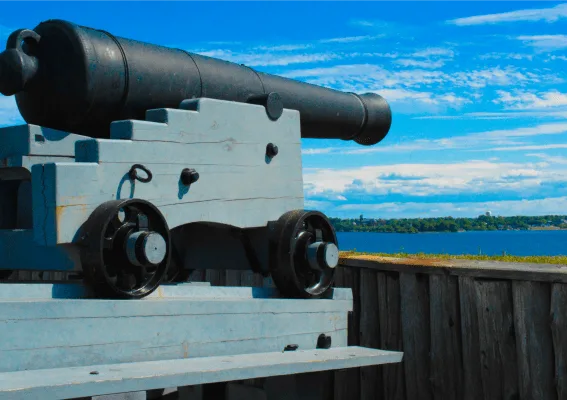
My family also visited Fort Wellington, its historic canons aimed squarely across the Saint Lawrence River at Ogdensburg in New York, on our first day traveling through Canada. We learned a history totally unknown to myself and my US educated kids — all within sight of the state of New York. What a way to remember that while Canada might be close by, Canadians have their own unique national perspective!
In Saint John, New Brunswick at the Carleton Martello Tower, my kids dressed up in those same British uniforms to defend Canada in the War of 1812. As a Marylander, I think of the burning of the White House, Dolley Madison’s rescue of George Washington’s portrait, and the origins of the Star Spangled Banner at the Battle of Baltimore. However, the British rule of Canada and their role in the conflict had not been something that I had previously considered.
Saint John, New Brunswick is a great starting point for a Bay of Fundy road trip. Check out Trekaroo’s Guide on New Brunswick and Bay of Fundy Road Trip.
The European Connection at Saint-Louis Forts and Châteaux National Historic Site of Quebec City
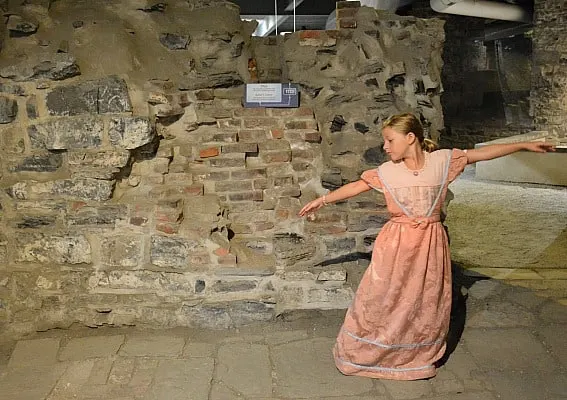
In my experience, no place in North America feels more European than Quebec City. Admittedly, in the twenty-first century, this has more to do with tourism than diplomacy. However, that doesn’t change the fact that the city can date its foundations back to Samuel de Champlain in 1608 — which makes it one of very few cities in Canada or the United States over four hundred years old. The city was the most prominent settlement and capital city of New France for just over 150 years before being conquered by the British and consequently becoming part of Canada at the time of its confederation 150 years ago. The Saint-Louis Forts and Châteaux National Historic Site educates visitors about this history, especially the years of French rule prior to the treatise of Paris in 1763 and the early years of British rule of Quebec.
My family has visited the colonial governor’s mansions in Williamsburg, Virginia and New Bern, North Carolina. But, it still took me awhile to realize that the ruins underneath Quebec’s magnificent Dufferin Terrace were of a colonial palace similar to both of these. As we walked on our self-guided tour from room to room, the kids completed activities ranging from dressing up as the governor of New France to identifying items in the kitchen.
The ruins felt older than they really were, but the tie to Europe, both France and England, felt much closer than anything that we experience on our side of the border.

The Fortifications of Quebec National Historic Site have a separate visitor center on the other side of the historic city. Strolling along the historic city walls, looking down on the city streets, is the perfect way to spend the twilight hours in Quebec City. Such a European thing to do!
The Parks Canada Beaver Represents a Nation’s Past at The Lachine Canal Fur Trade Museum in Montreal
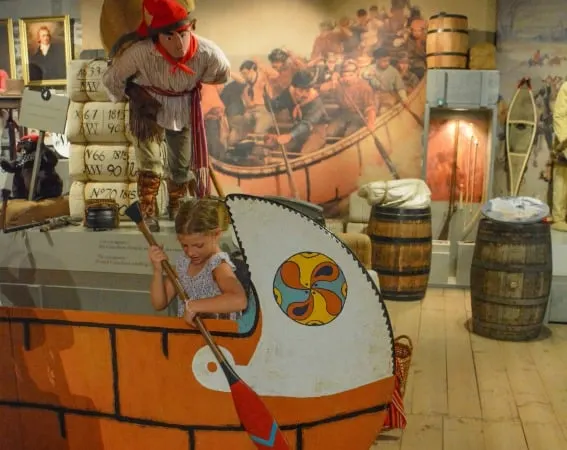
I know that I’m not the first California girl who has asked why would anyone brave the frigid northern winters to live in Canada, right? Four hundred years ago, the answer was the fur trade from the Saint Lawrence Seaway into what is now western Ontario and Manitoba. The fur trade was to Canada what the plantation culture was to the American South.
While the idea of the fur trade saddened my little girl, looking at the map at the Lachine Canal Fur Trade Museum and seeing how far men canoed each summer to pick up furs from the west fascinated my little boy. Learning about the fur trade gave my kids a deeper perspective on the differences between the origins of the United States and Canada.
But, I Didn’t Know He Was Canadian! Visiting Alexander Graham Bell National Historic Site on Cape Breton Island
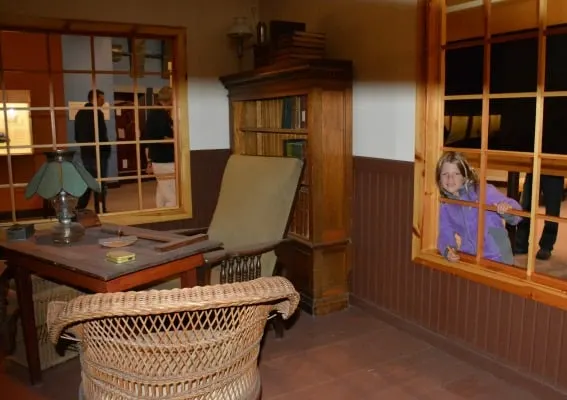
My bias tends to lead me to expect that English-speaking scientists that have contributed to major discoveries at American universities must actually be from the states. Prior to visiting the Alexander Graham Bell National Historic Site on Cape Breton Island, I certainly had no idea that Alexander Graham Bell spent many of his final years at his home in Nova Scotia rather than one of his labs in Boston. Nor was I aware of the full scope of his inventions including the hydrofoils that he tested on the lake just outside his home. The visitor center and museum that Parks Canada manages in Canada’s summer vacation land of Cape Breton Island is the perfect place for kids to have a quick science lesson (and history lesson) amid the gorgeous scenery of this beautiful island. On a sunny day, children learn about Alexander Graham Bell’s love of aerodynamics by building kites and flying them outside in view of the Bras d’Or Lake and on more gloomy days there are plenty of indoor scientific demonstrations to captivate the kids.
Looking to travel to Nova Scotia? Trekaroo has a guide for that: A Nova Scotia Road Trip!
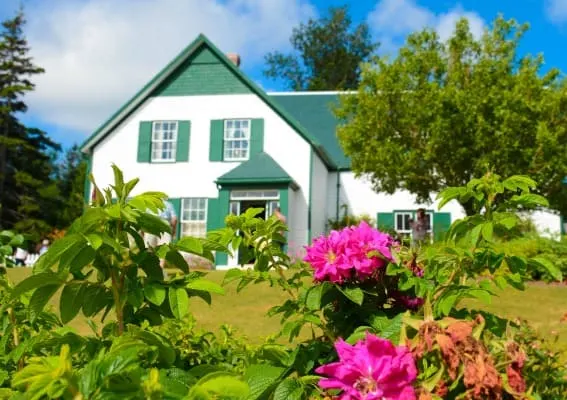
Of course, anyone who knows of the author Lucy Maude Montgomery is also aware that she was Canadian. Thousands of tourists a year go on a sort of pilgrimage to the Green Gables Heritage Site on Prince Edward Island to spend a few hours at the site that LM Montgomery used as the inspiration for Anne of Green Gables. Children and adults alike are inspired by this beautiful island. After visiting, my children, yes even my six-year-old boy, declared themselves fans of Anne of Green Gables for life and proceeded to watch the DVD in the car for the remainder of our road trip.
Eastern Canada History with Parks Canada Xplorers Program

When in the States, I encourage my children to complete junior ranger programs when we visit United States National Parks and historic sites run by the National Park Service. Before setting out on our Canadian road trip, I had looked for information on the Parks Canada Xplorers program, but I had not been able to find as much information online as I would have liked. Now based on my experience, I can say that the Parks Canada Xplorers booklets are generally best suited for kids ages 6-10 while most United States Junior Ranger booklets are geared towards kids with at least a second grade reading level. The Xplorers booklets are more experienced-based and require less writing than their US counterparts; the Canadian booklets also encourage more practical, hands-on learning versus the more technical learning required to complete the booklets in the United States. Across Eastern Canada, the Xplorers booklets and tags are available in both English and French; even in Quebec, we had no difficulty obtaining English materials. On occasion, my children picked out French language tags due to the novelty. Generally, we spent between 45 minutes and 90 minutes exploring the historic sites that we visited across Ontario, New Brunswick, Quebec, Prince Edward Island, and Nova Scotia.
All photos (other than the featured image) by the author Melissa Moore.
- 13 Great Family Friendly Hotels in Washington DC - April 11, 2025
- Blue Ridge Parkway Road Trip in Virginia - March 11, 2025
- Epic Eastern Canada Road Trip with Kids: Itinerary & Tips Before You Go - March 7, 2025


